What does Dracaena marginata look like, plant care, propagation and replanting
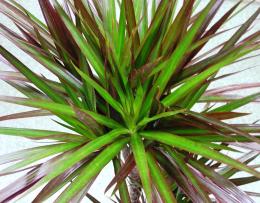
To create home comfort and decorate a room, many people use indoor flowers. In this case, the dracaena flower is perfect.
This ornamental plant grows in nature as a shrub or tree, in indoor conditions it resembles a miniature palm tree. The main thing for Dracaena marginata is care, it is important that it is regular and correct.
Content:
- Description of the plant, types
- Dracaena marginata: care after purchase
- Transplantation: selection of soil and pot
- Watering and fertilizing
- Lighting
- Optimal temperature
- Organization of wintering
- Reproduction of Dracaena marginata
- What signs are associated with the plant?
Description of the plant, types
This plant comes from the Asparagus family and is considered an evergreen flower. The trunk is smooth, tree-like.
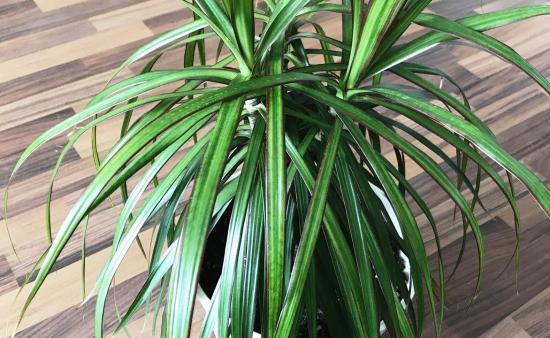
The foliage is straight, narrow and long, it is thanks to this shape that the plant resembles a palm tree. The leaves grow abundantly, but they are very thin and can be easily damaged during transplantation or transportation.
The color of the leaves is different: dark green, light green, there are stripes with pink and white tints. The buds are very fragrant, cream or white in color. Dracaena rarely blooms when cared for at home, sometimes it may not bloom even once.
The stem grows slowly, up to about ten centimeters per year.
Very useful, as the leaves purify the air in the room, eliminating formaldehyde, ammonia and benzene.
There are many types, here are the most common
| Fragrant | During flowering, the peduncle grows a meter in length. The buds have a rich aroma, hence the name - fragrant. The stem of the flower is thick, so you definitely need a support for stability. The leaves have different shapes and colors, sometimes they are monochromatic, in other cases there are stripes and variegation. |
| Marginata | The second name of the species is Bordered. The name was obtained due to the appearance of the leaf plate. It has a contrasting edging along the edges. This type is the most common and is perfect for residential buildings and office premises. The foliage is sharp, green, the stem is slender. |
| Godzefa | The second name is surculose. The peculiarity of the plant is that young shoots grow from the soil, and not from the stem. The shape resembles an ornamental shrub. The plant climbs heavily. The inflorescences are yellow-green in color. There are clearly defined spots on the foliage. |
| Sandera | This species is shaped like bamboo. However, unlike bamboo, the flower is very small, the maximum height is 1 meter. The stem is fragile and thin, the foliage grows densely. The leaves have silver and white streaks |
Each type is attractive in its own way, but the care is the same.
Dracaena marginata: care after purchase
Caring for dracaena necessary throughout its life, it is important to pay special attention to the flower after purchasing it from a flower shop.
The plant is difficult to adapt, so favorable conditions are created for it.
Place the flowerpot in a cool, well-ventilated room where there are no other indoor flowers. During this period, it is important that the sun does not fall on the flower.
Watering is carried out moderately. The soil should be slightly moist, this will allow you to notice insects that might have appeared on the plant in time.
Adaptation lasts about fourteen days. After the specified period, the plant is placed in a prepared place, taking into account the temperature and lighting conditions in advance. The correct selection of flowerpot and soil is important.
If you create all the necessary conditions for a flower, it will not get sick, and will quickly adapt to a new place, perhaps blooming in the future.
Let's watch a video about what kind of care Dracaena arginata requires:
Transplantation: selection of soil and pot
Every year it is necessary to replant a plant at a young age, a mature flower needs to be replanted every three years, old ones do not need to be replanted at all, but only the top layer of soil should be replaced.
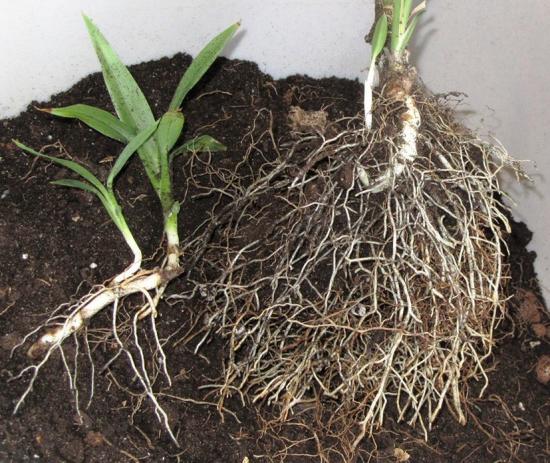
The transplantation process includes several stages:
- Carefully remove the dracaena from the pot and clean the roots from the soil. It is important to consider that all parts of the plant are fragile, including the roots, so extraction is carried out by transshipment.
- Select the required flowerpot. The pot should be ceramic, three centimeters larger and higher than the previous container. Every year the flowerpot will increase.
- The soil used is soil specially designed for ornamental palm trees. Initially, a drainage layer is poured into the flowerpots; vermiculite, expanded clay or pebbles are used as drainage. Then the purchased soil is filled in; to create looseness, you can mix the soil with charcoal or crushed brick chips. This combination will avoid rotting of the root system.
- Now the plant is planted in the soil, covered with the remaining soil and watered.
Every week, watering is repeated and at the same time substances for active growth are introduced. You can use the stimulator Kornevin or Epin. As soon as the flower takes root and begins to grow actively, feeding stops.
Watch a video about transplanting dracaena:
Watering and fertilizing
Dracaena does not tolerate excess moisture, this will lead to rotting of the root system and the death of the plant.
Watering should be moderate and soft. To do this, use a special watering can with a diffusing nozzle. The water should be warm; ideally, melt water is used.
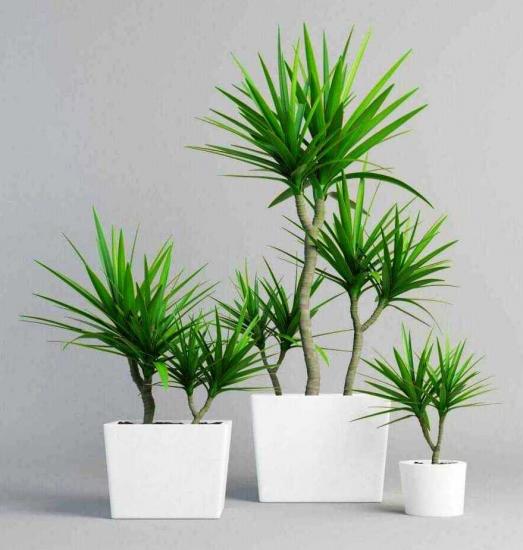
In the summer season, water regularly and often; in extreme heat, it is important to spray the leaves with water. Dry the soil monthly, allowing the soil to dry out a couple of centimeters.
In winter, the flower is watered less often. It is important to monitor the soil and not allow it to dry out to three centimeters deep.
Dracaena needs fertilizers during the period of growth and adaptation. In this case, the substances are administered once a week or every fourteen days. In cold weather, the flower is fed depending on its state of health; usually feeding is carried out in winter once every thirty days.
Lighting
Dracaena must be protected from ultraviolet radiation. As lighting you need to use diffused light. If you have a variegated variety, then this flower is not afraid of sunlight.
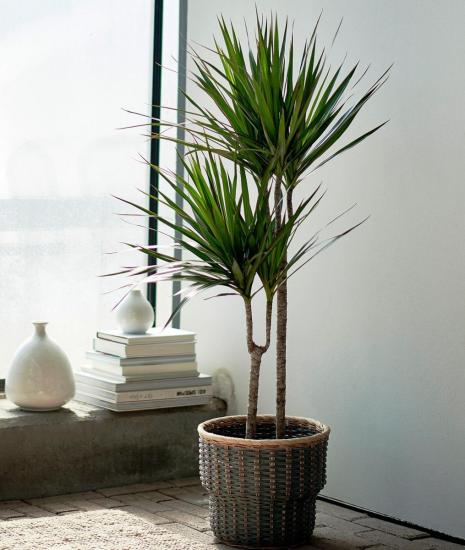
This plant should not be placed on a windowsill on the sunny side. It is best to place the flowerpot in the middle of the room. In summer, you can take the flower out onto the balcony or into the garden, creating shadow protection for it.
Artificial light is also suitable as lighting, this is especially effective in winter.
By observing the condition of the foliage, you can determine whether your plant has enough light or not. If the foliage begins to lighten and the sprouts begin to stretch upward or towards the window, it means there is not enough light. In this case, move the flowerpot closer to the light, or additionally create artificial lighting.
Optimal temperature
The flower is heat-loving; it can easily tolerate even hot periods, but dies at low temperatures.
The optimal temperature for growth and flowering is +29 degrees in summer, +15 degrees in winter.
Organization of wintering
It is necessary to create favorable conditions during winter so that the flower is comfortable.
Although the plant is heat-loving, the temperature should not exceed +16 degrees in winter. Otherwise, hot air will cause dry soil and foliage. If the owner likes to heat the room strongly in winter, it is worth installing dracaena in the room where the heat reaches the least.
If the flower is on a window, insulate the window sill and windows to avoid condensation. Ideally, place the flowerpot on a stand or shelf, away from batteries.
The plant is watered extremely rarely in winter. If moisture has accumulated in the pan, it is important to drain it. Act according to the principle - it is better to water less than to fill. The roots may rot due to excess moisture; dealing with this is much more difficult than overdrying the soil.
During the wintering period, completely abandon fertilizing.
Reproduction of Dracaena marginata
Dracaena propagates in three ways:
- seeds;
- cuttings;
- layering.
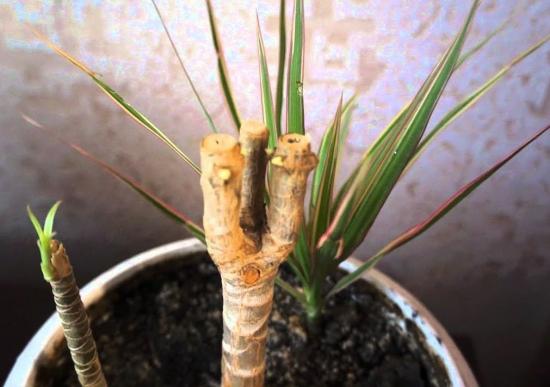
Let's look at each method in detail.
| Seeds | This technique is the most difficult, since it is necessary to properly prepare the seed. The seeds need to be peeled and then soaked in a growth stimulator for fifteen minutes. Now the material is dried and planted in moist soil. The soil should be covered with film or a greenhouse should be used. For germination, it is necessary to maintain a temperature regime of about twenty-five degrees. Periodically open the film for ventilation. In a month, sprouts will begin to appear, picking and replanting are carried out. |
| Layerings | On the layering, a mark is made in the part where the roots should appear in the future. An incision is made across the layer and a match is inserted. Then this place needs to be wrapped with sphagnum and film. When the root begins to sprout, the cuttings are cut off and transplanted into the ground. |
| Cuttings | Reproduction by this method is carried out in the spring, during pruning. Cut the cuttings into lengths of five to seven centimeters. Treat the cut areas with an antiseptic, then dry and treat with growth stimulants. Now plant the cuttings in the ground, cover with film and control the humidity and temperature. In a month, new shoots and roots will appear, you can remove the film. |
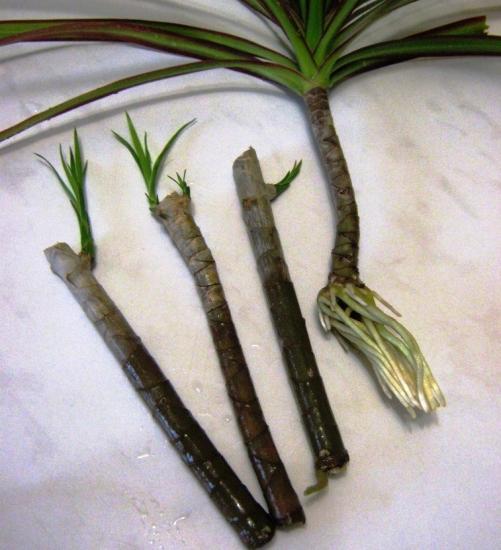
The last method is the simplest and most effective.
What signs are associated with the plant?
There are different beliefs:
- Dracaena is considered the flower of happiness, as it eliminates negative energy and promotes material abundance.
- Esotericists claim that the plant allows a person to get rid of deep emotional turmoil and depression, taking all the negativity for themselves.
- Since ancient times, it was believed that if dracaena grows in a house where one person lives, it means that family well-being will soon await the owner.
- Dracaena is called a peacemaker flower, as its energy promotes harmony and eliminates all troubles and conflicts in the family.
Believe it or not, it's up to you. These are only assumptions and unverified statements.
So, Dracaena marginata is a very beautiful ornamental plant. However, this crop requires special care, properly selected lighting, temperature and watering. If you create optimal conditions, the plant will delight the eye for many years.



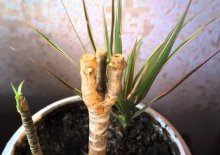
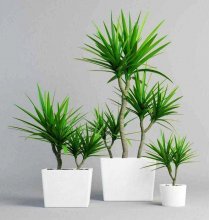




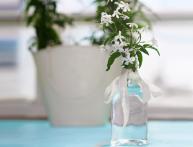
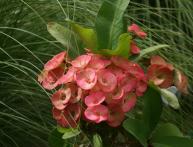

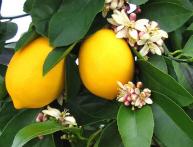

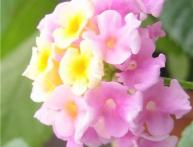
Comments
We have several of these growing at home; this plant can hardly be called particularly capricious, so I recommend that all beginners get one. Firstly, she is very beautiful, and secondly, she takes care of her, like everyone else.
Our dracaena has been growing for more than five years and it is also the largest tree. It would be good if some beautiful flowers bloomed on the dracaena in the spring. Unfortunately, this is not provided for by nature, but she did not skimp on the beautiful crown.
I used to have Dracaena at home, but for some reason the tips of its leaves were wilting and drying out. I looked closely at other people who also had this plant and the same problem. Why do the tips of the leaves turn yellow and dry out? Does anyone know the reason?
One of my favorite flowers. It does not require special care - watering as the soil dries, timely replanting, fertilizing once every six months to a year. When the plant grows too tall, it loses its attractiveness, so I divide it into cuttings, and a new palm tree grows from the root.